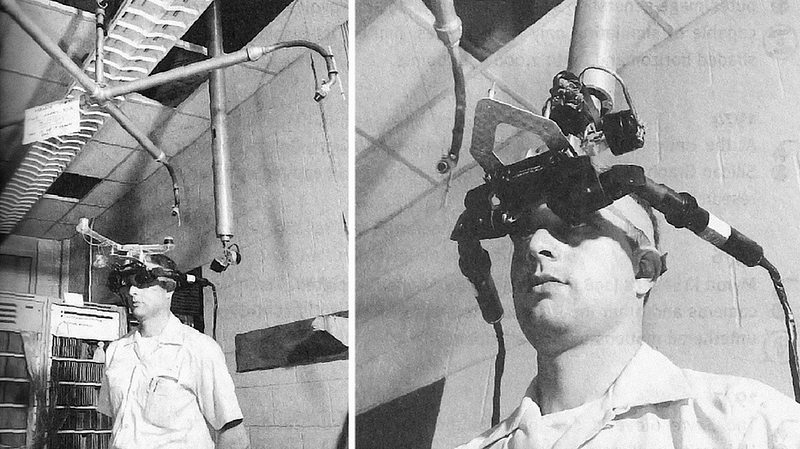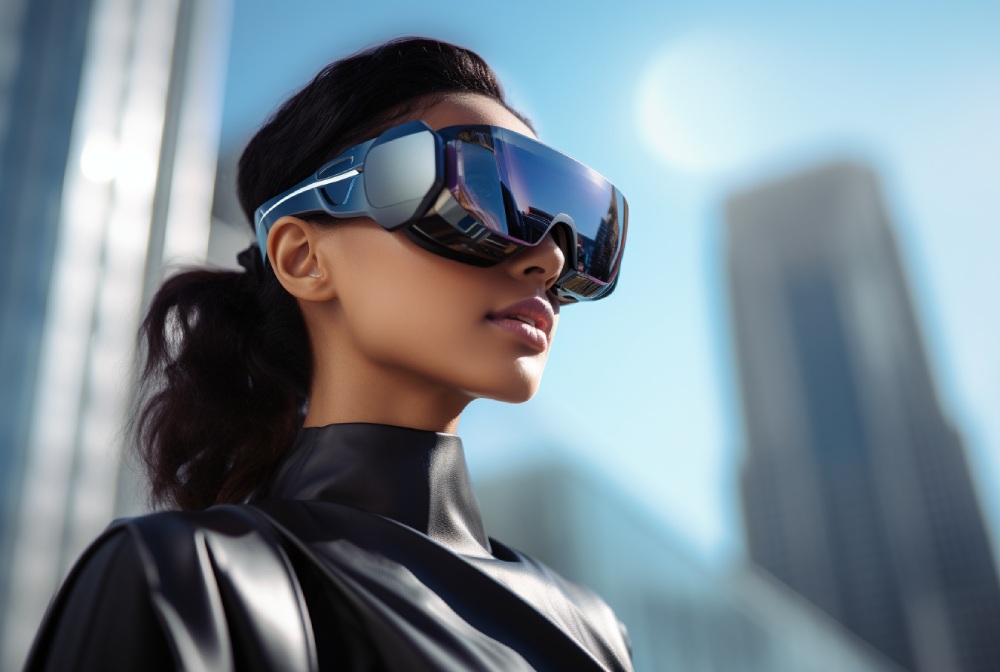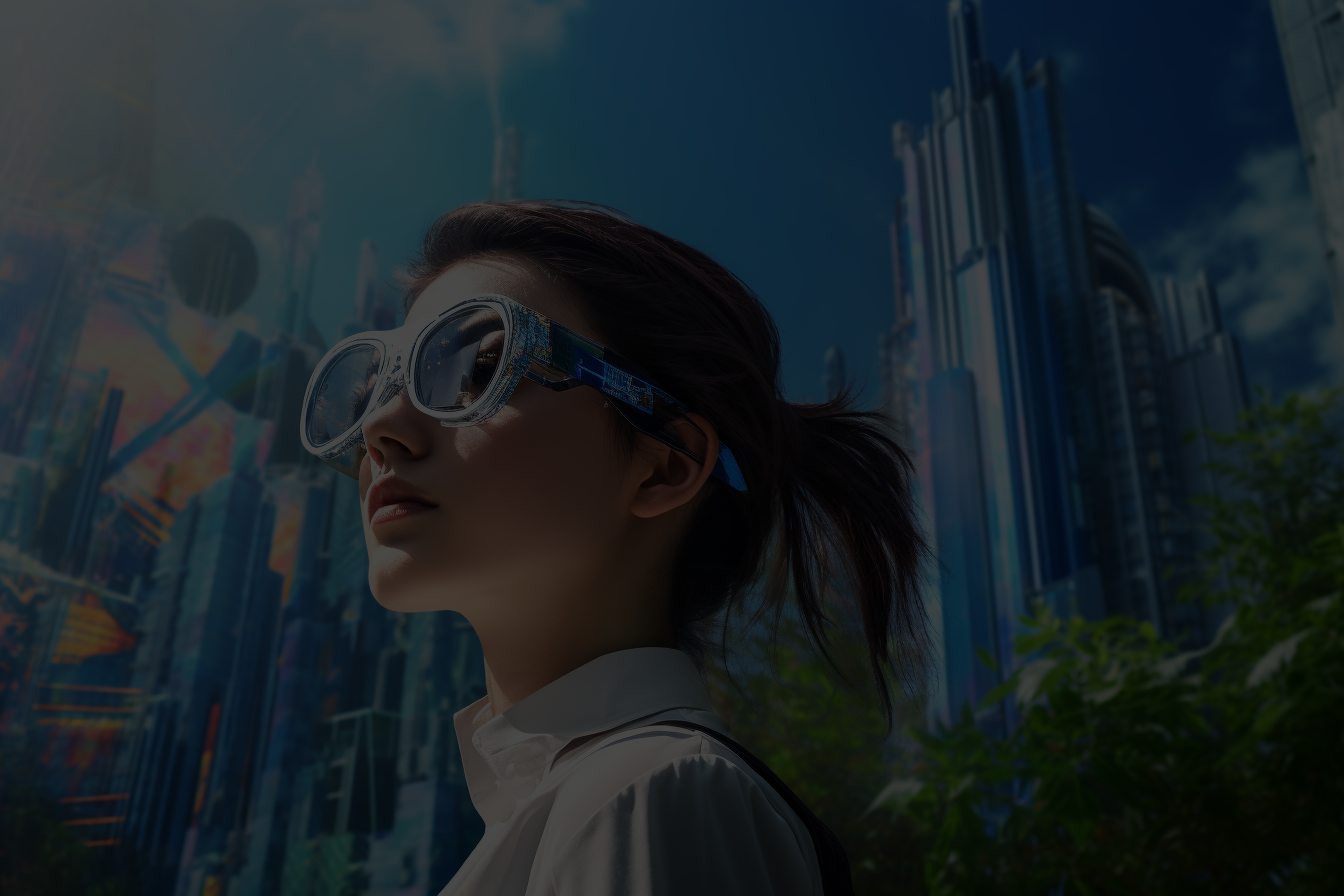Imagine waking up in the year 2035 as Alex, a high school student. You put on your lightweight VR headset and suddenly find yourself standing in ancient Rome. Your history teacher, appearing as a Roman scholar, guides you and your classmates through the Colosseum, discussing its historical significance. In the afternoon, you switch to a virtual lab to complete a chemistry experiment with teammates from different continents. By evening, you’re hanging out in a virtual café, chatting with friends who live thousands of miles away.
This might sound like science fiction, but it could be closer to reality than we think. The question is, will VR be the future of technology, entertainment, work, and most importantly, education?
Historical Context
Virtual Reality has come a long way since its conceptual beginnings in the 1960s. Early versions were clunky, expensive, and limited in capabilities. Fast forward to today, and we have sleek headsets like the Meta Quest, HTC Vive, PlayStation VR, Pico Neo, and Apple Vision Pro that offer high-quality immersive experiences. The technology has transitioned from a niche novelty to a mainstream medium, impacting various sectors from gaming to professional training.

Sword of Damocles – 1960s
Current State of VR Technology
In the rapidly evolving landscape of Virtual Reality (VR), both hardware and software are making strides that push the boundaries of what’s possible. On the hardware front, modern VR systems have come a long way in terms of sophistication, user experience and cost. Today’s headsets boast high-resolution displays that nearly eliminate the “screen door effect” and bring virtual worlds to life in stunning detail. Coupled with more power and lower latency, these advancements significantly reduce motion sickness, a common issue in earlier VR experiences. The improved field of view and features like eye and hand tracking in newer models adds to the immersion, making it easier for users to fully engage themselves in the virtual environment.
The synergy between hardware and software is crucial for the advancement of VR technology. As headsets become more comfortable and capable, software developers are given a broader canvas to create experiences that are not just entertaining but also practical and educational. Adding to this momentum is the fact that major game engines like Unity and Unreal Engine have made their tools freely available, significantly lowering the barrier to entry for developers to build immersive VR experiences. This democratization of development tools is fueling innovation and allowing a wider range of creators to contribute to the expanding VR ecosystem. As a result, this symbiotic relationship between hardware and software is driving the rapid growth and adoption of VR across multiple sectors, from gaming and social interaction to professional training and beyond.
It’s worth noting that the pathway to broader VR adoption may not solely rely on the immediate transition to headsets. Starting with flat-screen experiences on desktop and mobile platforms that are cross-play compatible with VR could serve as a stepping stone. This approach allows users to become accustomed to the virtual environments and social interactions that VR offers, without the initial investment in hardware. As they become more comfortable and engaged, transitioning to a fully immersive VR experience becomes a natural next step. This blended approach could be a pivotal strategy for driving larger-scale VR adoption in the near future, serving as a bridge between traditional digital experiences and the new frontier of virtual reality.

Advantages of VR
Immersive Experience
The most immediate and captivating advantage of VR is its unparalleled ability to create deeply immersive experiences. In the realm of gaming and entertainment, this immersion translates into more engaging, interactive, and emotionally resonant content. Gamers are no longer just controlling characters on a screen; they are stepping into the shoes of those characters, exploring virtual worlds as if they were real. But the potential applications of VR’s immersive capabilities extend far beyond leisure activities. Consider the realm of professional training: firefighters, for example, can be placed in a virtual environment that closely mimics the unpredictable and hazardous conditions they would face in real life. This not only enhances the training experience but does so without exposing trainees to the actual risks involved, thereby offering a safe yet effective learning environment. Similarly, medical professionals can practice complex procedures in a controlled, virtual setting before performing them in real life, reducing the margin for error and improving patient outcomes. The immersive nature of VR can also transform more traditional learning experiences, making subjects like history and science more engaging by allowing students to ‘live’ through events or experiments.
Remote Work and Collaboration
The COVID-19 pandemic served as a catalyst for the widespread adoption of remote work, fundamentally altering the way businesses and organizations operate. While video conferencing and cloud-based tools have become the mainstay for remote collaboration, VR is poised to revolutionize this space even further. VR offers the possibility of real-time global collaboration that transcends geographical boundaries, allowing team members to work together as if they were in the same physical space. This level of interaction could significantly enhance team cohesion, creativity, and overall productivity. Virtual environments can be customized to suit the specific needs of a project or team, whether it’s an architectural firm needing a 3D space to review building designs or a medical research team collaborating on complex simulations. As VR technology continues to mature, its potential to serve as the next frontier in remote work and collaboration becomes increasingly evident, promising a future where our approach to work is not just digitized, but truly virtualized.
Social Interaction & Identity
The transformative potential of VR in social interaction extends far beyond novel ways to connect; it delves deeply into the realms of identity, empowerment, and personal connection. Through customizable avatars and immersive environments, VR offers a unique canvas for self-expression, allowing individuals to explore and manifest their identities in imaginative ways. This is further amplified by the Proteus Effect, where the characteristics of one’s avatar can influence real-world behavior, potentially boosting confidence or empathy. In terms of empowerment, VR’s inclusivity offers a haven for people from diverse backgrounds, providing a space free from societal prejudices and enabling marginalized communities to find connection and support. Moreover, the unparalleled sense of presence in VR fosters deeper, more meaningful interactions, making even long-distance relationships feel emotionally close and immediate. As VR technology continues to evolve, its profound capacity to reshape how we understand and engage in social bonds promises to grow, offering revolutionary avenues for identity exploration and meaningful connection.

Challenges and Limitations
Cost and Accessibility
While VR technology has made significant advancements in terms of quality and immersion, one of the most pressing challenges that remain is the issue of cost and accessibility. High-quality VR headsets and the computers or consoles needed to run them can be prohibitively expensive for many consumers. This financial barrier limits the technology’s reach, particularly in educational settings or among lower-income populations who could benefit greatly from its capabilities. Additionally, the need for a spacious physical environment to safely use room scale VR experiences further restricts accessibility, especially for those living in smaller spaces or shared accommodations. As a result, the transformative potential of VR risks being confined to a relatively privileged demographic, unless concerted efforts are made to make the technology more affordable and accessible. Initiatives like subsidized educational programs, lower-cost headset options, and public VR experiences in libraries or community centers could be steps toward leveling the playing field.
Health Concerns
The health implications of long-term VR use are still not fully understood, and this presents another set of challenges. While short-term effects like eye strain and motion sickness are well-documented, the long-term consequences of extended VR use remain largely unknown. Some concerns have been raised about the potential for eye strain, particularly among younger users whose eyes are still developing. Motion sickness, too, is a concern, as it can discourage users from engaging with VR for extended periods, limiting the technology’s utility for applications like education or professional training. Ongoing research is needed to fully understand the health implications and to develop guidelines for safe and sustainable use, especially as VR becomes more integrated into our daily lives.
Ethical and Social Concerns
As VR technology becomes more pervasive, a host of ethical and social concerns come into focus. One such issue is the risk of addiction, especially given the immersive and compelling nature of virtual worlds. The potential for users to become disengaged from reality raises questions about the technology’s impact on mental health. Social isolation is another concern; while VR offers new ways to connect, it also provides an avenue for escape that could exacerbate feelings of loneliness and detachment from the real world. Additionally, as with any digital platform, data privacy is a significant concern. The personal data collected by VR platforms—ranging from user behavior to biometric information—poses risks if not properly secured and managed. As society grapples with these ethical and social issues, it will be crucial for policymakers, developers, and users alike to engage in open dialogue to navigate the complex landscape of VR’s broader implications.

Future Prospects
Technological Advancements
The future of VR is intrinsically tied to the technological advancements that are currently in the pipeline. According to Deloitte Global’s report, improvements in underlying technology, such as greater processing power, better screens, and richer audio, are catalyzing the VR market’s growth. Next-generation VR hardware is expected to offer higher frame rates, higher-resolution displays, and enhanced spatial audio, all contributing to a more realistic and immersive experience. But the technological evolution doesn’t stop at hardware; software is also undergoing significant transformation. Integration with other emerging technologies like Artificial Intelligence and glasses-based Augmented and Mixed Reality is on the horizon, promising to further expand our immersive capabilities. AI could personalize virtual experiences, making them more interactive and adaptive to individual users. Meanwhile, mixed reality integrations can offer a blended experience, merging real-world elements with virtual environments. These advancements are not just speculative; they are essential for VR to move beyond its current niche status and become a pervasive technology.
Market Trends
The market trends for VR are incredibly promising, and the projections from Deloitte Global affirm this optimism. The VR market is expected to generate $7 billion in global revenue in 2023, a 50% increase over the previous year. A significant portion of this revenue will come from hardware sales, but the software market, although smaller, is also showing signs of robust growth. The report emphasizes that VR’s future growth will hinge on creating applications that encourage repeat usage and offer unique advantages. Emerging markets in healthcare, education, and enterprise applications are particularly noteworthy. For instance, VR’s capabilities in simulating work experiences, visualizing complex systems, and facilitating remote collaboration make it an invaluable tool in professional settings. As the industry identifies specific consumer and enterprise applications where VR can excel, we can expect an exponential growth trajectory in these sectors.
Societal Implications
As VR increasingly permeates our daily lives, its societal and philosophical implications become more profound and complex. On one hand, VR offers transformative possibilities for identity exploration and self-expression, challenging traditional norms and potentially fostering a more inclusive culture. It also holds the promise of democratizing education and employment, breaking down geographical and socio-economic barriers to offer equal opportunities for intellectual and professional growth. On the other hand, the technology raises ethical questions about social behavior, human interaction, and the nature of reality itself. Could the allure of immersive virtual worlds lead to escapism, detracting from real-world responsibilities and relationships? Additionally, the data collected in these virtual environments opens up new concerns about privacy, autonomy, and potential misuse, reinvigorating age-old philosophical debates in a modern context. As VR matures, its capacity to reshape various aspects of society—from identity and opportunity to ethics and philosophy—will only grow, demanding thoughtful engagement from all sectors of society.
Conclusion
While VR is still a technology in flux, its transformative potential across various facets of human life—from education and healthcare to social interaction—is increasingly evident. Despite current challenges such as technical limitations, health concerns, and ethical quandaries, the trajectory suggests that VR’s integration into our daily lives is not just possible but increasingly likely. The question of whether VR will be the future has a complex answer, but the signs point toward an affirmative.
While VR may not completely supplant traditional methods in sectors like education or healthcare, it is poised to become an indispensable component of our technological and social fabric. The advent of spatial computing and virtual communities is not a matter of ‘if’ but ‘when,’ and the timeline for this seismic shift may be shorter than we think.
As we navigate the complexities and responsibilities that come with this transformative technology, one thing becomes clear: a future where VR and spatial computing are integral to our daily experiences is not just a speculative vision but an impending reality. So, the notion of a day in the life of a future student like Alex, fully immersed in a VR-enabled world, may not be a distant fantasy but an increasingly common reality in our collective human experience.



